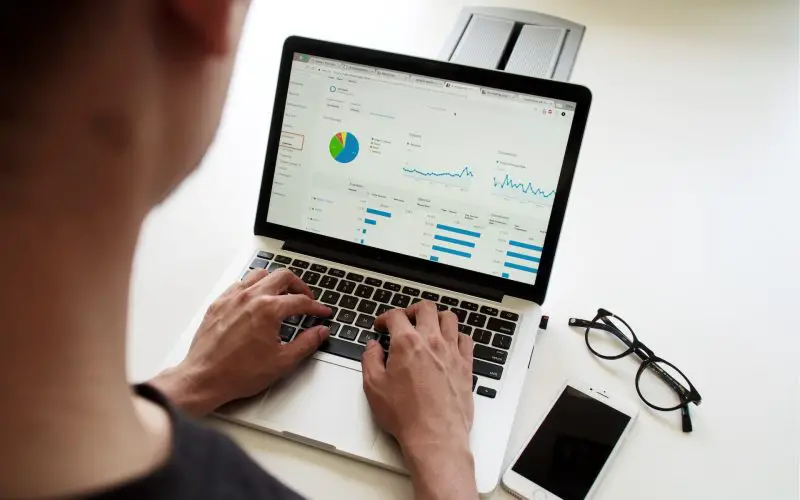We have to admit – we live in a pretty much fast-paced digital world. That’s how it is. And since we are all aware of the situation we share together, let’s be friends and share other secrets too.
Other secrets can include exploring different tools and techniques to enhance your website performance using data collection. It’s more than a secret, it’s an adventure.
You wonder why? Well, it’s because understanding your website performance is more critical than ever before. With the right tools and resources, you can gain valuable insights into how users generally interact with your site and what content resonates the most.
Above all, where improvements are needed to boost engagement levels. It’s exciting, isn’t it? Whether you’re an experienced professional or a newcomer in the field, there’s always something new to learn – especially with analysis efforts and improving your website data collection.
Let’s hear about the website data collection
As we already mentioned, the internet has become an integral part of our lives, especially within the business part of life. Understanding how we interact with websites is essential, specifically with businesses and organizations that are looking to improve their online presence.
Website data collection is not a simple process. It’s a process of tracking, storing, and analyzing user behavior in order to better understand how visitors use a website, and how can you detect patterns for attracting potential visitors.
There are several different tools and techniques you can use for website data collection, including web analytics tools like Google Analytics, session recordings, surveys, and user testing.
Each of these tools can provide the insights you need to discover what users are doing on a website, and how they feel about the experience.
Before you choose the right combination of methods, you should specify your needs and goals. This can be helpful, in general – but mainly it can help you to make a more informed decision on methods you should use, to achieve your objectives. It’s also important to stay in touch with laws and regulations, for example, you should check out the California Privacy Rights Act guide since it’s imperative to make sure your websites are not deceiving visitors and using any other misleading practices.
And what are the benefits of data collection?
Well, there is always room for improvement and data analysis can help you out in making a data-driven decision. Here are some benefits of analyzing website data:
- Identify opportunities for optimization
- Find the areas of your site that are underperforming
- A better understanding of your target audience
- Using behavior data for generating new ideas for content and features
- Measuring the impact of changes and updates
All of these benefits can create a space for growth, and pinpoint what is missing for more accurate and actionable insights.
But, where to start?
If you are looking at the aspects of website data collection, what is the most important – you should know about the variety of different software and resources that can be used to collect and analyze data.
If you know which ones are designed specifically for website data analysis, or for any different tasks – you are halfway through the job getting done. But, if you are not sure, here are a few things to consider:
- How much data do you need to collect?
- How often do you need to collect and analyze data?
- What kind of analysis do you need to perform?
- How much time and money are you willing to invest in the process?
After answering these questions, you can start exploring different website data and analysis tools. One of the most popular options is using the one and only – Google Analytics.
With Google Analytics, as a free tool, you get to use it as tracking website traffic, conversions, and other key metrics. Because of the many features, and convenience – it’s one of the most popular choices for collecting data. But the only downside to it is the limitation of tracking data only from Google search results.
What are the practices for tracking data?
Practices for enhancing your website data collection usually look like this:
- Use web analytics tools to track the behavior of visitors on your website. This data can be used to improve lots of things, such as website design and user experience.
- If you want to understand how visitors use your website, and what are they looking for – conduct user research. With this information, you are updating your website content and navigation.
- You should use A/B testing for different versions of your website, and decide after that which one performs better. This practice is mostly used for improving website design.
Don’t forget about the surveys! If you collect feedback from your users, you can identify what areas need to improve.

Techniques and methods for data tracking
One of the most effective methods for a deeper analysis includes web scraping, data mining, and web log analysis. But what are those?
Web scraping
Web scraping is a process of extracting data from websites, and with such a variety of tools with additional advantages, you have to be careful about the disadvantages.
But how does it extract data? Well, long story short – it’s a piece of software that simulates a user interacting with a website. They can be very effective in extracting data but are also – difficult to configure and maintain.
Also, you can use a wrapper which is a piece of code that is existing on top of a website code and allows you to extract data from it. The only problem with wrappers is that they can be less reliable and may not work with all websites.
You can try a different option though. To manually extract data from websites. This practice is time-consuming, but it can be very accurate if it’s done correctly. Also, there are always public APIs to access data, which is the easiest way to extract high-quality data but it depends on the website having an API that you can access.
Automated testing
With automated testing, you can use this process to ensure your website is functioning properly and accurately collecting data. You can use many different tools to automate your tests, including open-source and commercial options.
With open-source automated testing tools, you can create and run tests on your website without writing any code. But, you still need some technical knowledge to set up and use.
With commercial tools, you should know they are more user-friendly, but also more expensive. Running automated testing regularly is something you should acquire on a daily basis if you want your website to function properly.
Log file analysis
With log file analysis you have a process of examining log files, in order to collect information about website usage and performance. Of course, there are tools that are available to automate the process, but it can be done manually as well.
Log files analysis can provide insights into everything from what pages are being accessed most often, to where errors are occurring. Using web analytics software, you can provide detailed reports on website activity. Another option is to use a log file analyzer, which can identify trends and patterns in the data.

Website heatmap
Website heat mapping is the process of visually representing where visitors and users click on a page, on what link they click on, and how far down the page they scroll.
This information is mostly used to improve the user experience on a website, by understanding what people are interested in and where they are struggling to find what they need.
If you want to understand how visitors interact with your website, you should check out various different heat mapping and click-tracking tools. They can help you out in generating heatmaps, tracking conversions, and more.
Having feedback like this, and making it easy what is going on with your website traffic is one of the most important data you need to collect.
Enhancing website data collection and analysis is essential
It’s clear from the discussion here that there are plenty of ways in which you can use technology to understand website usage better by tracking user activity, collecting demographic data, and analyzing customer feedback.
With all of these in your mind, you will gain a greater understanding of who, in what way is visiting your website and how effectively your online efforts are working.
This is one of the most tremendous insights, which can help you to tailor your goals to success.








